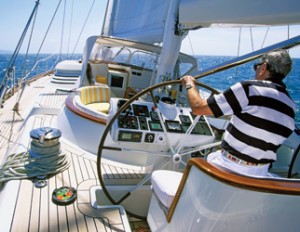Boats: Set course toward your dreams
Think the sailing lifestyle is beyond your means? Whether you look to buy a boat or just want to get immersed in the culture, we show you how to hit the water without getting soaked in expenses.
Advertisement
Think the sailing lifestyle is beyond your means? Whether you look to buy a boat or just want to get immersed in the culture, we show you how to hit the water without getting soaked in expenses.
 The wind in your teeth, the snap of the mainsail, the magic and romance of carving the waves in a yar little sloop … will be forever out of reach. That’s right, you can’t afford it. And the sooner you come to terms with the fact that sails and salarymen don’t mix, the happier you’ll be. So, at any rate, goes conventional wisdom. But then, conventional wisdom is seldom the entire story.
Yes, sailboats can be prohibitively expensive. However, they don’t have to be. Initiation into elite yacht clubs can run into the tens of thousands of dollars, whereas membership at other boating clubs can be had for as little as a couple of hundred dollars a year. There are, in short, sailboats and sailing clubs for virtually every income bracket. Even if you have no intention of ever owning your own boat, a yacht club membership can still offer great benefits at a surprisingly affordable price.
Here, then, are a few tips and tricks that will get you out on the water—and into the yacht club—without breaking the bank.
The wind in your teeth, the snap of the mainsail, the magic and romance of carving the waves in a yar little sloop … will be forever out of reach. That’s right, you can’t afford it. And the sooner you come to terms with the fact that sails and salarymen don’t mix, the happier you’ll be. So, at any rate, goes conventional wisdom. But then, conventional wisdom is seldom the entire story.
Yes, sailboats can be prohibitively expensive. However, they don’t have to be. Initiation into elite yacht clubs can run into the tens of thousands of dollars, whereas membership at other boating clubs can be had for as little as a couple of hundred dollars a year. There are, in short, sailboats and sailing clubs for virtually every income bracket. Even if you have no intention of ever owning your own boat, a yacht club membership can still offer great benefits at a surprisingly affordable price.
Here, then, are a few tips and tricks that will get you out on the water—and into the yacht club—without breaking the bank.
Share this article Share on Facebook Share on Twitter Share on Linkedin Share on Reddit Share on Email